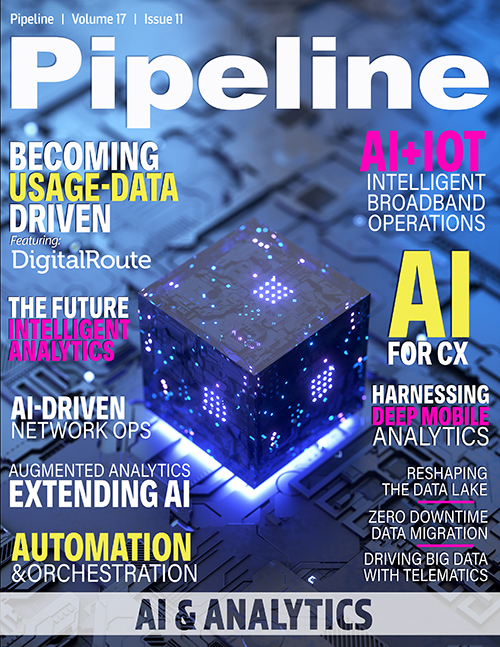Augmented Analytics: Extending AI Across the Telecom Enterprise
By: Suresh Chintada

Telecommunications has long been an industry that powers many others by providing continuous communication, connectivity, and data flows that are vital to sustain all kinds of operations.
But in a landscape flourishing with digital innovation, communications itself has taken on new flavors. Hyperscalers are driving alternative communication options like WhatsApp and Facebook Messenger that piggyback on networks, eating into marketshare. Operators may soon find themselves nudged out of the game if they do not differentiate.
The promise of artificial intelligence (AI) lies in exactly this: rapid differentiation through cost optimization, service agility, and new business models, which are table stakes for any telecom enterprise aiming to succeed in today’s digital, competitive, and disruptive marketplace.
The promise of AI
One cannot argue the significance of AI.
According to Gartner, by 2024 75 percent of enterprises will shift from piloting to operationalizing AI, driving a fivefold increase in streaming data and analytics infrastructures.
Those that have tested the waters are aware of how AI helps make better decisions, improve profitability, and increase operational efficiency. Think proactive customer service, timely fraud management, holistic business assurance, optimized network quality, better asset management, and 360-degree partner management, to name a few use cases for AI.
Nonetheless, operators are cautious and wary—possibly due to high initial costs. Yet, cost is the underlying marker because the entire telecom industry continues to play on managing margins. To boost profitability, organizations must make decisions faster and respond effectively to market changes. Like a virtuous circle, though, better decision-making requires accurate insights, which in turn require ready access to the right data.
In earlier years, business intelligence tools provided some edge. In a post-pandemic world, though, responsiveness and resilience are what differentiate those who survive from those who don’t. To become agile and responsive, organizations must first democratize access to data and leverage AI in a cross-functional manner.
Going beyond building to scaling AI
According to a study by the McKinsey Global Institute, the high-tech and telecom industry is more likely to report AI adoption. The study also states that more respondents are reporting revenue increases thanks to AI.
AI drives a fundamental internal shift, enabling telcos to stave off CAPEX-heavy investments while delivering ongoing value that translates to direct, tangible benefits.
By nature, AI is pervasive. It extends its capabilities across telecom enterprises delivering supreme efficiency, smarter insights, continuous improvements, and new business opportunities. The underlying success levers are CAPEX minimization, revenue maximization, and network optimization.
From a revenue perspective, AI can drive customer experience analytics, provide personalized recommendations, and improve campaign management. From a network perspective, it can spot anomalies based on usage patterns, allowing communication service providers to remedy disruption through timely maintenance or asset reharvesting. From a CAPEX point of view, AI models can help operators tap into lucrative business opportunities that leverage existing investments.



















